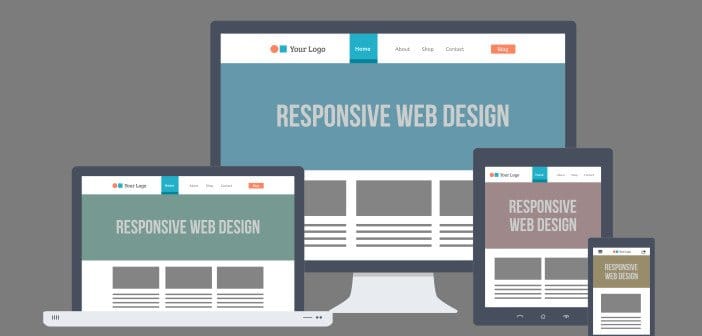Creating a responsive design? UI Guidelines you shouldn’t miss

Not long ago, websites were specifically designed and developed for desktop and laptop screens. This was perfectly alright till the time there were no advanced mobile devices that support the Internet access. With the advent of Internet-enabled mobile devices, web designers faced a new set of challenges; while designers were coming up with a slew of solutions to resolve the issues, the Responsive design approach has emerged as an inevitable solution.
Responsive Design – A Foreword
According to this design approach, the design and development must be done by considering the users’ behavior and the factors like screen resolution, mobile platform and orientation. To efficiently accomplish this, one needs to make an appropriate use of CSS media queries, images, and flexible grids and layouts. A website or application with a responsive design should automatically adjust itself to the screen-size, orientation and the scripting abilities of a targeted device. For this, it must embrace the technology that facilitates it to automatically render the web content on the basis of the users’ preferences.
Therefore, this design approach helps avoid designing separately for a plethora of devices. Thereby, making it a viable choice to target a colossal mobile audience base with a flair.
In this mobile age, businesses are endeavoring to embrace an effective and efficient mobile solution by investing in mobile app development and responsive design. This is because responsive design offers a surefire solution to ensure an impressive and intuitive design with a great UI for mobile visitors.
In this post, I have unleashed certain fundamentals that must be considered while designing responsive websites or apps. Let’s explore and understand the golden rules for a responsive UI design.
Screen Real Estate
While designing for mobile, the most essential aspect is to optimally utilize the available screen space. You must plan out a design that doesn’t compromise on the user experience due to lack of space. It is important to note that unlike desktop users who often make an extensive search, mobile visitors are usually interested in content, and simple and instant interactions.
Work on your Typography
On mobiles, it is imperative to ensure that the featured content is easily readable so that users can understand everything on the go. Thus, it is advisable to use legible typefaces with optimized size, make it certain that the average number of your users don’t need to zoom in for reading the content.
Implement Fluid Images
One of the most important aspect of responsive design is to make the images shrink or expand themselves within the confined fluid grid. This can be efficiently accomplished by using the following line of CSS code.
img { max-width: 100% }
With this code, you basically inform the browser that the images should be as large as their pixel values, this will certainly ensure the image quality and its ideal size. With this approach, the image will shrink only if it is nested inside a parent container that is smaller in size than the pixel value of the image. However, while adjusting an image, its original aspect ration must be maintained.
Use Fluid Grids
Earlier, the websites were defined in terms of pixels, it was great for targeting a fixed screen size. However, today we need an approach to target various screen sizes with a flair. For this, a relative unit like percentage makes a great choice.
To convert a pixel value into percentages, you can use the below mentioned formula.
Target (in pixel) /context (in pixel) = result in percentage
- Target is the pixels occupied by a particular element.
- Context is the pixels occupied by the wrapper of that element.
- The result gives you the percentage required to display the element.
Easy Navigation is a key to a good UX
If you want your users to interact and perform actions that can benefit your business, make sure that your visitors can navigate with a breeze. Mobile devices demand a streamlined approach for an effective navigation. The navigation of a website or an app should be primarily based on the architecture of the featured content and several other design aspects. Here are certain points that must be considered while working on the navigation.
- Precisely observe your user behavior
- What are the prime objectives of your business
- How navigation should works
- Use familiar icons for an intuitive UI
- Create a smooth and consistent flow of actions
- Place the UI element by taking their functions and users’ interactions into account.
Reflection:
Responsive design will not only help you boost your business values, but will also heighten your visibility on the web. This is because many search engines, including Google prefer mobile-friendly designs and with responsive design, you are ensuring a mobile-optimized presence. Therefore, while creating an enticing and intriguing UI for mobile as well as desktop users, responsive design also allows one to augment the search engine rank of his website. These are a few of the noteworthy points that must be kept in mind for proficiently designing a worthy responsive design to leverage your business.






